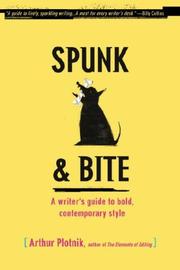All my manuscripts have something in common – a main character who goes against the established ways of a land or society.
I think this will continue to be the case, because it’s something I can identify with easily and it produces conflict. It’s also a theme in most of the books that I love. Protagonists who leave their little hidebound villages have become a cliché of fantasy, though, and that made me decide to write a little more about ways to get around this.
1. The status quo is not necessarily a bad thing.
Of course, it’s a little rarer to find fantasy heroes who are very much invested in making sure the current monarch remains in charge, or who want to improve their lives without leaving their village. But the system that’s in place may have been working for hundreds or thousands of years, which means there may be some merit to it.
2. Sympathetic characters can support the status quo as well.
Authorial bias shows only too clearly when all the good, decent characters come down on one side of an issue, while all the evil characters gibber and sneer from the other side of the dividing line.
Not only is this preaching to the choir, it can turn readers off. We know, often from personal experience, that disagreement on even the most controversial of topics doesn’t equal a moral failing. But not only is it more credible to have good people on both sides, it will engage the readers’ emotions as well. This way, they’re not certain that the author will allow the correct side to win. This way, someone they care about is going to be hurt.
That’s one reason George R. R. Martin’s A Song of Ice and Fire series is so gripping. There are brave, loyal and above all three-dimensional people in every faction fighting for the throne. And some of them support usurpers – without being automatic antagonists for doing so.
3. The overturning of the current order should have consequences.
What happens after the Dark Lord is destroyed? Are the surviving trolls and orcs in his army or dungeons put to death? Pardoned? Rehabilitated? Who gets to keep his magical possessions or artifacts, and how can the new order make sure these are never used again?
I’d love to read a fantasy novel about what happens after the evil king is dethroned. What are the economical ramifications? How do ambassadors from other lands react? Do people flee the city, or is there rioting? Looting? If he has surviving relatives, how much of a threat do they pose, and what’s done about them?
This was the only thing I didn’t enjoy about Orson Scott Card’s Hart's Hope
4. Defying the established order can be the right thing done in a wrong way.
I have a world with different races that diverged from a human-like common ancestor. These races vary, sometimes very obviously, from the human-like norm and are often treated as second-class citizens. When a surgeon openly disapproves of this treatment of the Variants, he attracts several of them as his supporters.
It’s only later that people find out just how he deals with the prejudice. He uses his surgical skills to alter the appearances of Variants so that they no longer look different, and in the process he removes what makes them unique.
He may have the right idea – that people should be equal. But he’s going about it in a very wrong way.
5. The hero cannot change everything.
Sometimes the status quo can be so large and so monolithic that it’s unrealistic to have the protagonists upturn all of it. And in some cases, compromises may be easier for readers to buy than a wholesale revamping of the laws of a medieval world. Maybe they start a grassroots movement, or perhaps the book closes with a sense that things are going to change.
That’s better than a story which ends with the hero overthrowing the Dark Lord, making sure (feisty and attractive) women are allowed to serve in the military, smiling proudly as his black/gay/handicapped friend is finally accepted and welcomed by the people, and so on.
Tweet













